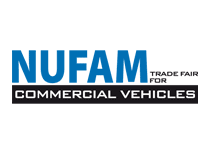Electric, hybrid, fossil fuel: manufacturers remain flexible
In view of climate protection targets, rising operating costs and the goal of long-term competitiveness, truck manufacturers are increasingly turning to modular vehicle platforms.
These enable flexible drive systems based on purely electric, hybrid or fossil fuels – while also making production and use more efficient. DAF and Iveco provide examples with their own modular concepts.
More and more European municipalities are announcing that only zero-emission vehicles will be allowed on inner-city roads in the future. Fully electric trucks will therefore become indispensable for transport companies in urban areas. With modular platforms, vehicle manufacturers can meet this demand without neglecting the still indispensable technology of combustion engines.
Four drive systems on one platform
A modular architecture is based on a standardised platform consisting of a chassis, frame structure and interfaces to which various drive modules can be adapted. Ideally, a modular platform allows for four different drive philosophies. In addition to battery electric drive (BEV), these are hybrid drive (parallel/plug-in), the use of fuel cells (FCEV) and, of course, the classic combustion engine for diesel, HVO or other biofuels.
Such platforms have major advantages for manufacturers. Depending on the application profile and region, demand for different drive variants can be met on the same production line. Shared components also ensure cost efficiency.
No separate electric model
One example of a modular design is the Iveco eDaily, which is technically and structurally based largely on the same platform as the conventional Iveco Daily with a combustion engine. Both the Daily with diesel and CNG drive and the battery-electric eDaily use the same classic ladder frame (chassis-on-frame construction) with rear-wheel drive and identical wheelbases and axle loads. This enables the consistent use of superstructures and components. The IVECO eDaily is therefore not a separate electric model, but a fully-fledged variant of the modular Daily concept.
DAF Trucks also offers a flexible platform for BEV and hybrid drives. The new generation of DAF XD and XF can be equipped with a fully electric Paccar E-drive train. The DAF XD and XF Electric trucks are powered by Paccar EX-D1 and Paccar EX-D2 permanent magnet electric motors, which offer outputs ranging from 170 to 350 kW. A wide range of battery packs with two to five strings is available for this purpose. This enables emission-free ranges of over 500 kilometres on a single charge. With optimal vehicle and charging planning, the trucks can even cover an impressive 1,000 fully electric kilometres per day.
The family resemblance is striking
The S-eWay from Iveco is another battery-electric truck model that has been on the market since 2024. The similarity to the conventionally powered S-Way is also striking here. In addition to the fully electric version, there is also another version as a fuel cell electric vehicle (FCEV). The cab and chassis structure are almost identical on all models. Axles, frames and superstructures can be used in a similar way. However, the drive and energy systems are fundamentally different. The S-eWay is therefore not a ‘converted diesel truck’, but a newly developed electric truck based on the S-Way architecture – specially adapted for battery and fuel cell propulsion.
Conclusion: For DAF and Iveco, modular architecture is a key success factor in decarbonisation and production optimisation. Both manufacturers are pursuing a multi-powertrain approach: vehicles can be equipped in a targeted manner – depending on the application profile, sustainability goals and economic efficiency checks. Production remains flexible and investment-friendly – and that is vital for maintaining a leading position in the rapidly changing commercial vehicle world. By the way: DAF and Iveco are exhibitors at NUFAM.

